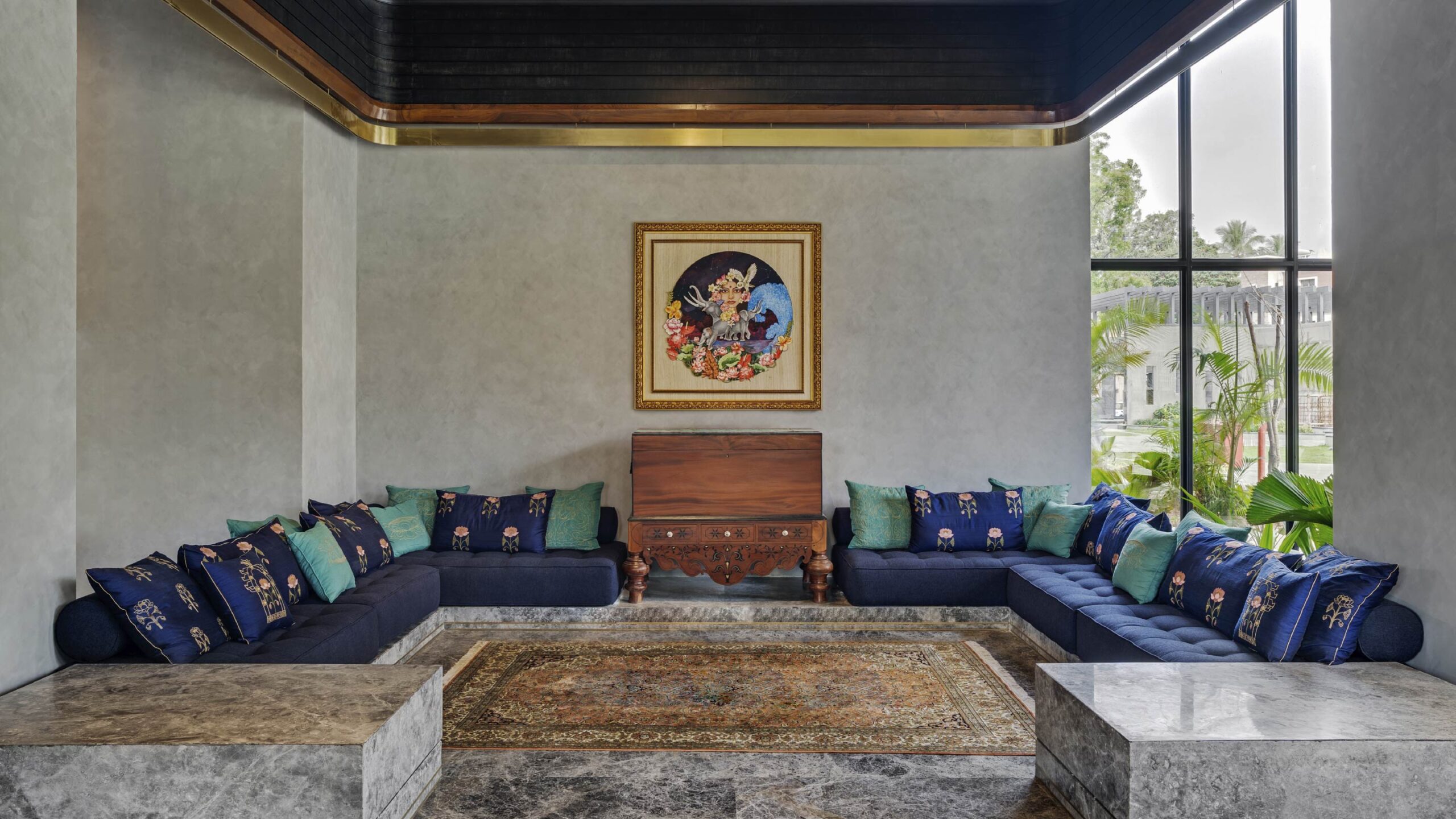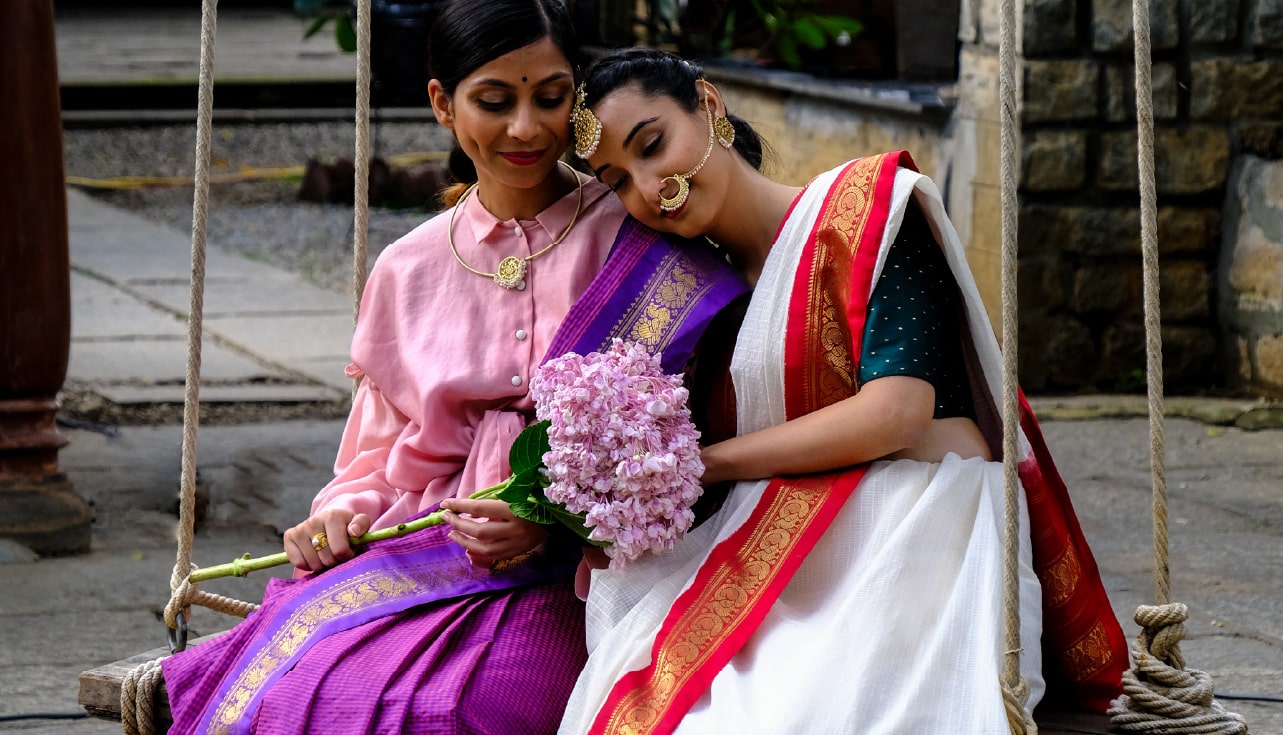Meet Franck Barthelemy, Bangalore-based French art dealer who tells us about his ongoing love affair with art, the Indian art scenario and why communities like Svasa Homes could play an important role in promoting local and international art and culture in future.
The place was Bois De Boulogne in Paris. The museum, none other than the iconic Louis Vuitton Foundation. And we were lucky to have Franck Barthelemy walk us through the stunning collection of paintings, sculptures and installations beautifully curated by the LMVH group. Barthelemy loves to talk about art. To introduce artists and their work. To tell us what makes an artist great and why a particular painting commands a prime spot in a museum. Moving seamlessly between countries in the UAE, Europe, Africa and Asia Barthelemy connects with art collectors, galleries and artists, showcases new talent and helps curate portfolios for art investors.
Here’s more as we quiz him on his journey into the contemporary world of Indian art and his personal journey as a reputed art dealer:
I started my career with the French Embassy in Bombay in the early 90s. I then joined Exxon-Mobil, a few years later, British Petroleum. I was in marketing, trading and business development in various senior positions. I travelled a lot from Paris to London or Rotterdam, Russia, Northern Africa, the Gulf countries and India. I had always been fascinated by art. The Louvre was my playground from a very early age. I started buying art during my trips to Russia, mostly lithographs and bronze icons. My collector’s journey has never ended. In 2009, when I left BP, I took a sabbatical to explore the Indian art scene more deeply.

“This is when my passion became my job. I met amazing dealers and gallery owners. And even more amazing artists. I started connecting them with friends who were keen to buy art and I guess, I became an art dealer.”
FRANCK BARTHELEMYPrivate art dealer, NOGAYA ART
I would not call myself a curator (I know a few housewives don’t hesitate to do so, laughs) but I do organise few art shows, I write a lot about art and of late I give talks about art history, a new field I love.
The current Indian unfortunately is not evolving.
To quote a famous collector living in Delhi, there are too many talented artists and not enough talented buyers. I would add, there is no ecosystem to make them meet. We can count on two, maybe three professional galleries and dealers. There are unfortunately countless jokers. All this put together creates a big mess and no structure to a serious ecosystem.
How would one who is not an artist, or unfamiliar with museums learn to appreciate art?
In the Indian context, that’s a challenge. There is no art education in school and very few museums, especially contemporary art museums. Unless one is passionate (almost genetically) and brave enough to discover art in books, it is almost impossible. Of course, if one is lucky enough to be born in a well off family, travel will open up the realm of art. A trip to Paris will surely take you to the Louvre and the overwhelming Apolon Gallery (the Italian Renaissance). A first step that can trigger interest, curiosity and willingness to know more. If one is brave and lucky enough to push the door of a “good” gallery in India, one can meet amazing owners who could help the layman to explore Indian art and then go beyond. This is how I discovered the Bengal school of art for instance. Another option is to visit the NGMA network that owns a very large collection of art and organises talks. Again, it is a matter of luck to attend a good talk that could trigger interest in art but it is worth trying.

Mural in Svasa Homes: It is said that art inspires creativity
Who are your top five Indian artists? Which Indian artists have made waves in the international art scene and how does one go about discovering upcoming artists in India apart from Galleries?
It is a tricky question. What defines the “top artists”? The commercial success (mostly led by the auction houses)? The number of museum exhibitions? The number of good critics in the papers? The number of collectors? I can surely give my top five. From the moderns, I like Gaitonde, Mehta, Souza, Raza, Hashmi. From the contemporary lots, B Kher, S Gowda, S Gupta, N Malani, M Nair, T Venkanna, Sunoj D. From the upcoming lots, M Das, C Saha, G Latua, T Negi. The best way to discover artists for a newcomer is the gallery network (even though there are less and less galleries), art fairs and biennales, auction houses, art professionals, and friends who are collecting.
If one wanted to invest in art, what advice would you give them?
Set up a budget, see as many artworks as possible within that budget to understand what you like, and buy what you like. Unless one spends millions in very well traceable artworks (impressionists for instance), good art investment is a tricky concept. With the right adviser, one might not lose money. With the right adviser, time and luck, one might make money.
How has the pandemic impacted the art scene
Badly. Some galleries shut down. Some galleries tried the online route. Some auction houses multiplied the number of sales online with very mediocre material. Some artists are struggling. Some of them might be forced to find jobs and ditch their art practices.
What are your thoughts about the museum culture in India and are you in favour of privatisation of existing museums?
States need to have museums representative of their cultures and their histories. India has very few of them and considering the depth of the Indian culture, it should have many more (with large budgets to maintain them). Private museums usually exhibit a collector’s collection, his/her tastes, sometimes (most of the times) his/her wealth. They are good to have but should not be considered “ambassadors” of a culture.
Places like Svasa Homes could be wonderful platforms to start art appreciation sessions, to showcase artists, to have pop-up art shows and to initiate vibrant conversations around art.
How do you evaluate a painting?
There are no rules. If you are not a collector, go with your gut. What appeals to you – colours, emotion, signature or composition? Collectors may look at the name of the artist, the provenance of the painting, what awards the artist has won, which galleries or art fairs have exhibited his/her work. But remember tastes change and evolve. So if you get bored with a piece of art, it is time to sell it, gift it or rotate it. The important thing is to keep enjoying it.
What is the point of modern art?
Art is entertainment. A door to another world. It enhances your surroundings. It simply makes a home or a workspace more beautiful.



